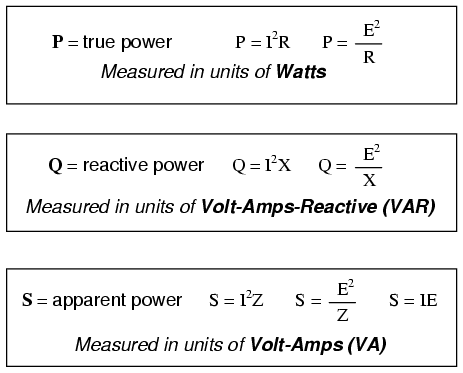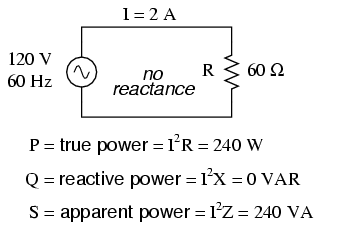The combination of reactive power and true power is called apparent power, and it is the product of a circuit's voltage and current, without reference to phase angle. Apparent power is measured in the unit of Volt-Amps (VA) and is symbolized by the capital letter S.
Apparent power is a measure of alternating current (AC) power that is computed by multiplying the root-mean-square (rms) current by the root-mean-square voltage. In a direct current (DC) circuit, or in an AC circuit whose impedance is a pure resistance, the voltage and current are in phase, and the following formula holds:
P = ErmsIrms
where
P is the power in watts,
Erms is the root-mean-square (rms) voltage in volts, and
Irmsis the rms current in amperes. But in an AC circuit whose impedance consists of reactance as well as resistance, the voltage and current are not in phase. This complicates the determination of
power.
In an AC circuit, the product of the rms voltage and the rms current is called
apparent power. When the impedance is a pure resistance, the apparent power is the same as the
true power. But when reactance exists, the apparent power is greater than the true power. The vector difference between the apparent and true power is called
reactive power.
If Pa represents the apparent power in a complex AC circuit, Pt represents the true power, and Pr represents the reactive power, then the following equation holds:
Pa2 = Pt2 + Pr2
There are several power equations relating the three types of power to resistance, reactance, and impedance (all using scalar quantities):
Please note that there are two equations each for the calculation of true and reactive power. There are three equations available for the calculation of apparent power, P=IE being useful only for that purpose. Examine the following circuits and see how these three types of power interrelate for: a purely resistive load in Figure below, a purely reactive load in Figure below, and a resistive/reactive load in Figure below.
Resistive load only:
True power, reactive power, and apparent power for a purely resistive load.
Reactive load only:
True power, reactive power, and apparent power for a purely reactive load.
Resistive/reactive load:
True power, reactive power, and apparent power for a resistive/reactive load.
These three types of power -- true, reactive, and apparent -- relate to one another in trigonometric form. We call this the power triangle: (Figure below).
Power triangle relating appearant power to true power and reactive power.





Walang komento:
Mag-post ng isang Komento